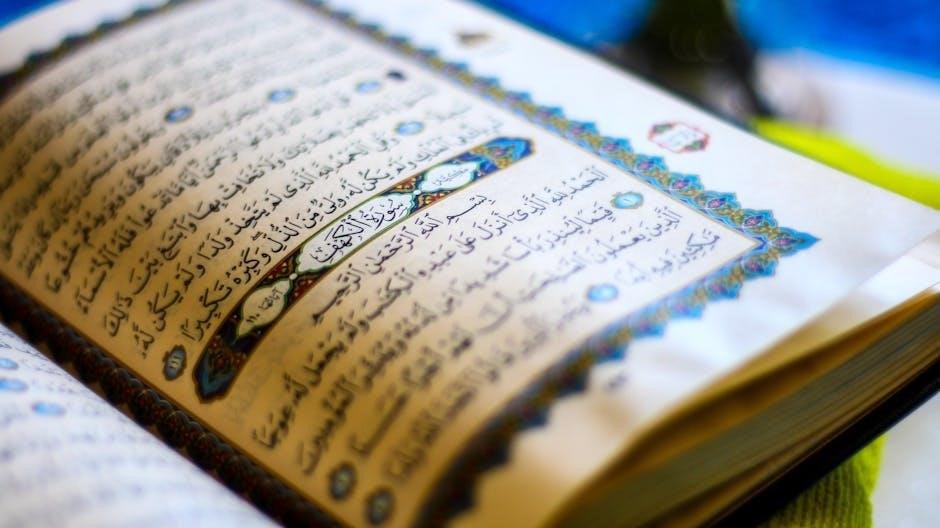Khaled Hosseini’s A Thousand Splendid Suns is a heart-wrenching novel that explores the lives of two Afghan women, Mariam and Laila, amidst decades of political turmoil and societal change.

Historical Context
A Thousand Splendid Suns is set against the backdrop of Afghanistan’s tumultuous history, spanning from the 1970s to the early 2000s. The novel vividly portrays the Soviet invasion, the brutal civil war, and the oppressive Taliban regime. These events shaped the lives of ordinary Afghans, particularly women, whose rights and freedoms were drastically curtailed. The Soviet occupation brought modernization efforts but also sparked resistance, leading to decades of conflict. The rise of the Taliban in the 1990s introduced rigid, misogynistic laws, forcing women into seclusion and denying them education and work. The U.S. invasion in 2001 marked a turning point, but the scars of war and political instability remained. Hosseini’s vivid depiction of these events highlights the resilience of Afghan women and the enduring impact of historical upheaval on their lives. The novel serves as a powerful reminder of Afghanistan’s complex past and its people’s struggle for survival and hope.
Plot Summary
A Thousand Splendid Suns traces the intertwining lives of Mariam and Laila, two Afghan women living through decades of war and societal upheaval. Mariam, born out of wedlock in the 1950s, grows up in isolation with her mother, Nana, near Herat. After Nana’s death, Mariam is forced to marry Rasheed, a abusive man from Kabul. Laila, born in the late 1970s, is raised in Kabul and loses her parents during a bombing. She is also forced to marry Rasheed after discovering she is pregnant with her lover Tariq’s child. Despite initial hostility, Mariam and Laila form a bond, united by their suffering and love for their children. The story unfolds through their struggles under Rasheed’s cruelty, the oppressive Taliban regime, and their ultimate acts of sacrifice and resilience. The novel culminates in Mariam’s tragic death, saving Laila and her children, and Laila’s eventual return to a rebuilding Afghanistan.

Characters
Mariam, a resilient illegitimate child, and Laila, a spirited young woman, form an unbreakable bond despite their troubled pasts. Rasheed, their oppressive husband, embodies the brutality they endure together.
Mariam
Mariam, born in the 1950s near Herat, is the illegitimate child of Jalil, a wealthy cinema owner, and Nana, his housekeeper. Her early life is marked by isolation and rejection, living with Nana in a small hut away from Jalil’s main household. Despite her circumstances, Mariam finds solace in her religious studies with Mullah Faizullah, who teaches her to recite verses from the Koran. Her journey takes a tragic turn when, at 15, she is forced to marry Rasheed, a man from Kabul, after her mother’s suicide. Mariam’s resilience is tested as she endures years of abuse and miscarriages, yet she finds strength in her bond with Laila, her co-wife. Mariam’s character symbolizes the enduring spirit of Afghan women, whose lives are shaped by both personal and societal struggles. Her story is one of quiet defiance and ultimate sacrifice.
Laila
Laila, born in Kabul in the late 1970s, is a bright and determined young woman whose life is shaped by the turmoil of Afghanistan’s recent history. Growing up in a household marked by her father’s intellectual encouragement and her mother’s emotional distance, Laila finds solace in her relationship with Tariq, a childhood friend. Her life takes a devastating turn when her parents are killed in a bomb explosion, leaving her alone and forced to marry Rasheed, who is already married to Mariam. Laila’s resilience shines through as she navigates the challenges of a loveless and abusive marriage, all while hiding her pregnancy with Tariq’s child. Despite the hardships, Laila forms a powerful bond with Mariam, united by their shared struggles and their love for their children. Her story is one of courage, loss, and ultimately, the hope for a better future.
Rasheed
Rasheed, a complex and volatile character in A Thousand Splendid Suns, is a man rooted in tradition and driven by a deep-seated need for control. Married to both Mariam and Laila, he rules his household with an iron fist, using fear and violence to maintain dominance. His cruelty is not only physical but also emotional, as he constantly belittles and manipulates his wives. Rasheed’s character is shaped by his own insecurities, particularly his desire for a son, which fuels his resentment toward Mariam’s infertility and Laila’s initial failure to produce a male heir. Despite his abusive nature, Rasheed is a product of Afghanistan’s patriarchal society, where men hold absolute power over women. His actions reveal the oppressive realities faced by women under such regimes, while also highlighting the resilience of Mariam and Laila, who find strength in their bond despite his relentless cruelty.
Themes
The central themes of A Thousand Splendid Suns revolve around the resilience of women, the power of female friendships, and the enduring impact of war and oppression. Khaled Hosseini explores the societal constraints placed on women in Afghanistan, highlighting their struggles for identity and survival amidst political turmoil. The novel delves into themes of love, sacrifice, and the enduring strength of the human spirit. It also examines the cyclical nature of violence and the ways in which societal norms perpetuate inequality. Through the lives of Mariam and Laila, Hosseini underscores the importance of hope and the unbreakable bonds formed between women in the face of adversity. These themes are intertwined with the historical context of Afghanistan, offering a poignant portrayal of the challenges faced by its people, particularly women, over several decades.

Symbolism
In A Thousand Splendid Suns, Khaled Hosseini employs rich symbolism to convey deeper meanings and emotions. The title itself, inspired by a 17th-century poem about Kabul, symbolizes the city’s lost beauty and the enduring spirit of its people. Light and darkness are recurring symbols, representing hope and despair. Mariam’s life in the kolba, a small hut, symbolizes her isolation and societal marginalization, while her burqa represents the oppressive restrictions placed on women. The character of Rasheed embodies the oppressive forces of patriarchy and tyranny, serving as a symbol of the broader societal injustices. The bond between Mariam and Laila symbolizes the strength and resilience of women in the face of adversity. These symbols weave together to create a powerful narrative that reflects the struggles and hopes of Afghanistan’s people, particularly its women, during decades of turmoil.
Literary Style
Khaled Hosseini’s A Thousand Splendid Suns is written in a deeply emotional and accessible style, blending vivid storytelling with a poetic sensibility. The novel’s dual narrative structure, alternating between Mariam’s and Laila’s perspectives, allows for a rich exploration of their experiences and emotions. Hosseini’s prose is straightforward yet powerful, making the harrowing events of the story both intimate and impactful. He frequently uses imagery and metaphors to convey the beauty and brutality of Afghanistan’s history, as well as the inner lives of his characters. The novel’s tone shifts seamlessly from moments of quiet reflection to scenes of intense drama, reflecting the turbulence of the characters’ lives. Hosseini’s ability to balance hope with despair creates a narrative that is both heartbreaking and uplifting. His writing style ensures that the reader is deeply invested in the lives of Mariam and Laila, making their struggles and triumphs feel deeply personal. This approach has made the novel a beloved and unforgettable read for millions.

Reception
A Thousand Splendid Suns received widespread critical acclaim and commercial success upon its release in 2007. The novel debuted as a New York Times bestseller and remained on the list for 15 weeks. It was praised for its powerful portrayal of Afghan women’s resilience and its exploration of themes such as family, love, and survival. Reviewers noted that Hosseini’s storytelling brought a human dimension to the political and social upheavals in Afghanistan, resonating deeply with readers worldwide. The novel also earned recognition from literary organizations, including being named one of the American Library Association’s Best Books for Young Adults in 2008. Additionally, it was selected as one of the BBC’s 100 most inspiring novels in 2019. Despite some criticism for its emotional weight, the book has been celebrated for its ability to evoke empathy and understanding. Its success solidified Hosseini’s reputation as a masterful storyteller of Afghanistan’s modern history.
Cultural Significance
A Thousand Splendid Suns holds profound cultural significance as it vividly portrays the lives of Afghan women across decades of turmoil. The novel bridges cultural gaps by offering a deeply personal and emotional lens into Afghanistan’s history, from the Soviet invasion to the Taliban regime. Hosseini’s storytelling humanizes the experiences of women like Mariam and Laila, highlighting their resilience and strength amidst oppression. The book has sparked global conversations about gender roles, war, and cultural identity, making it a vital piece of contemporary literature. Its exploration of Afghan traditions, family dynamics, and societal expectations provides readers with a rich understanding of the country’s cultural fabric. The novel’s impact extends beyond literature, as it has inspired discussions on human rights and feminism. By shedding light on Afghanistan’s untold stories, A Thousand Splendid Suns has become a cultural touchstone, fostering empathy and understanding on a global scale. Its influence continues to resonate, making it a cherished and thought-provoking read.

Educational Resources
Various educational resources are available for studying A Thousand Splendid Suns, enhancing both student and teacher engagement. Study guides from platforms like SparkNotes and LitCharts offer detailed summaries, chapter analyses, and thematic explorations. These resources provide insights into characters like Mariam and Laila, highlighting their development and the novel’s central themes. Additionally, essay questions and discussion prompts facilitate deeper understanding of the text. Teachers can utilize these tools to create structured lesson plans, focusing on historical context, literary devices, and cultural significance. The novel’s complex themes, such as resilience and oppression, are supported by these resources, making them invaluable for classroom use. Furthermore, online forums and study groups offer spaces for collaborative learning, enabling students to share perspectives and gain a richer comprehension of the novel. These educational aids ensure that A Thousand Splendid Suns remains a powerful and accessible text for academic exploration.
Comparisons with Other Works
A Thousand Splendid Suns is often compared to other works that explore themes of cultural identity, familial bonds, and societal oppression. Khaled Hosseini’s The Kite Runner shares similar Afghan cultural contexts, though it focuses more on male relationships. Similarly, works like Amy Tan’s The Joy Luck Club and Jhumpa Lahiri’s Interpreter of Maladies delve into intergenerational conflicts and cultural displacement. The novel’s focus on female resilience aligns with works like The Handmaid’s Tale by Margaret Atwood, though the settings differ; Hosseini’s ability to weave personal stories within broader historical frameworks parallels authors like Gabriel García Márquez, who blends individual and collective narratives. While A Thousand Splendid Suns stands unique in its portrayal of Afghan women’s struggles, its emotional depth and thematic richness draw parallels to other literary explorations of identity, survival, and redemption. These comparisons highlight the novel’s universal appeal and its place within global literary traditions.

Adaptations
Khaled Hosseini’s A Thousand Splendid Suns has been adapted into various forms, including a limited series. In 2023, it was announced that One Community acquired the rights to adapt the novel into a limited series, with Hosseini himself involved in the project. This adaptation aims to bring the powerful story of Mariam and Laila to the screen, capturing their resilience and bond amidst Afghanistan’s turmoil. The series is expected to cover the novel’s key events, including the Soviet invasion, Taliban rule, and the women’s struggle for survival. Given the book’s global success, selling over 17 million copies, the adaptation is highly anticipated. The series will likely emphasize the novel’s emotional depth and cultural significance, offering a new medium to explore its themes. This adaptation underscores the enduring appeal of Hosseini’s work and its ability to resonate across different formats. Fans of the novel eagerly await its visual interpretation, hoping it will honor the original story’s essence.
Khaled Hosseini’s A Thousand Splendid Suns is a profound and emotional journey through the lives of Mariam and Laila, offering a glimpse into Afghanistan’s tumultuous history. The novel highlights the resilience of women in the face of oppression and war, emphasizing themes of love, sacrifice, and survival. Through its vivid storytelling and well-crafted characters, Hosseini sheds light on the struggles faced by Afghan women during decades of conflict. The novel’s impact extends beyond its narrative, as it has become a cultural touchstone, sparking conversations about gender roles and societal change. With its universal themes and deeply human characters, A Thousand Splendid Suns remains a powerful and unforgettable read, leaving readers with a lasting appreciation for the strength of the human spirit. Its legacy continues to inspire, making it a significant work in contemporary literature.